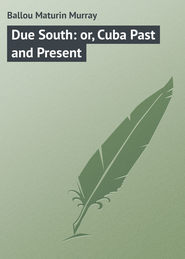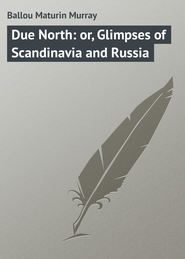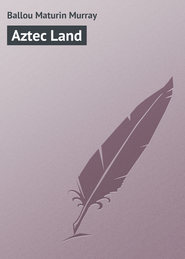По всем вопросам обращайтесь на: info@litportal.ru
(©) 2003-2024.
✖
The New Eldorado. A Summer Journey to Alaska
Настройки чтения
Размер шрифта
Высота строк
Поля
The mine is admirably situated for the purpose of receiving or shipping freight, as vessels drawing twenty feet of water can lie alongside of the rocks which form the natural shore less than one hundred yards from the quartz mill. We were informed that sixteen million dollars have been offered and refused for this property. The would-be purchasers were members of a French syndicate. The agent says that the owners have but one price, namely, twenty-five million dollars, and they are in no haste to part with their property even at that sum. On the mainland, just across the channel from Douglas Island, three or four miles back of Juneau, is Silver Bow Basin, where there are gold deposits of vast extent and richness. Here quite a population is engaged in placer and quartz mining. The miners present a motley crowd with their picks, shovels, and red shirts, many with a stump tobacco pipe between their lips, and all with eager faces.
A spacious and thoroughly equipped quartz mill is being erected by a Boston company of capitalists for the purpose of developing a large property which it is thought will nearly equal the Treadwell in its output of the precious metal. This is known as the Nowell mine, and it is said that the quartz assays one hundred dollars and over to the ton. Silver Bow Basin is a small round valley lying in the lap of the mountains, accessible through a deep gulch behind the town. It is surrounded by noisy waterfalls, which supply just the needed power for manipulating the gold quartz. Across the range is another rich mineral locality, known as Dix Bow Basin.
On Admiralty Island, near the northwest end of Douglas Island, opposite Takou Inlet, there has lately been discovered several gold deposits which are owned by a Boston company. The prospectings upon some of this well-defined vein have developed a percentage of gold to the ton so large that we hesitate to specify it. “Thirty years ago,” said Mr. Thomas S. Nowell to us, “the mines of Alaska would have proved comparatively valueless; the machinery and process that are now so successfully applied to reducing the ores were then unknown. The great economy and consequent profit is derived from late discoveries which are now perfected, producing machinery which works as though it had the power of thought.”
The names of several other profitable mining enterprises in this vicinity might be given, but we have said enough to indicate the great mineral wealth of this portion of the Territory, and to justify our title of The New Eldorado. There are abundant gold indications all along the coast, as well as upon the islands. In the sands of any considerable stream between Cape Fox and Cook’s Inlet the “color” of gold can be obtained by the simple process of panning. The question is not where gold can be found in Alaska, for it seems to be wonderfully and abundantly distributed, but as to what localities will best pay to expend capital in developing. A number of abandoned claims show that the failure to realize a satisfactory profit in gold mining by eager, impatient, and unreasonable individual seekers without proper machinery is as frequent as in any other business enterprise awkwardly planned. This is as apparent in Africa, Australia, and California as it is in this region. The Treadwell mine on Douglas Island is in latitude 58° 16′ north, just about on a line with Edinburgh, Scotland.
We quote once more Mr. Nowell’s own words: “The mountains of Alaska abound in gold-bearing quartz, the extent of their deposits exceeding any similar discoveries in the world. There is without doubt more gold-bearing quartz on Douglas Island alone, which can be worked at a handsome profit, than ten thousand stamps could crush in a century; a well-defined vein from two to six hundred feet wide traversing the island for at least from six to eight miles.”
There is a missionary family, supported by the Quaker persuasion, located at Douglas Island, whose earnest effort in civilizing and teaching the natives has been crowned with considerable success. The self-abnegation and conscientious labor of these people are truly worthy of all commendation.
Soon after leaving Juneau, when near the head of Lynn Channel, the grand Davidson glacier comes into view, filling the space between two lofty mountains. It measures twelve hundred feet high by some three miles in breadth, being as wide as a frozen sea and as deep as the ocean. While looking upon it one is overawed by a sense of its immensity and grandeur, as it seems hanging, poised, ready to drop into the fathomless sea. Where we pass it there intervenes a terminal moraine overgrown with trees and green foliage, which contrasts vividly with the icy background formed by the glacier. The glaciers of Europe are mere pygmies in comparison with this marvel, which is named after Professor Davidson, who has carefully explored and described it. Both the Muir and Davidson glaciers are spars of the same great ice-field, which has an unbroken expanse large enough to lie over the whole republic of Switzerland. The Muir glacier will be reached presently in Glacier Bay.
Soon after leaving the Davidson glacier we are in Pyramid Harbor. This is the region of the Chilcats, who were formerly one of the most warlike tribes in the Territory, but who seem to have outlived their belligerent propensities. Their rude, but picturesque cabins dot the neighboring shore. The little settlement here consists mostly of bark huts and a substantial trader’s store, together with an extensive and successful fish-cannery. The product of the latter is over a million pounds of fish per annum, the whole being engaged for 1889 to a Liverpool firm. This amount is shipped in seventy thousand cases of about fifty pounds each; the fish are packed in tins holding a pound each. This is an average amount as regards various factories on the coast, though some very much exceed it. The Indians now cheerfully accept employment from the whites, and gladly receive the regular wages which may be agreed upon. They appear to be the best carvers on the coast, and have an abundance of their handiwork to sell to the interested white visitors. These articles consist of carvings in ivory (walrus’ teeth), decorated sheep-horns, copper and silver bracelets, bows, arrows, and spearheads. As engravers on copper and silver the Chilcats excel all other people of the Northwest. Some of their women wear a dozen narrow bracelets on each arm, all of home manufacture. They are also skillful in making ear-rings, and ornamental combs out of ivory and sheep’s horn. As successful imitators they are remarkable, and will almost exactly reproduce any design which is given to them as a pattern. It seems strange that so aggressive and warlike a tribe should be skilled in carving and many mechanical productions.
Certain people have bestowed much honest but needless sympathy upon these “poor abused Indians.” Such persons may be assured that they are amply able to look out for themselves and their own interests, as regards all material matters. No white man can get any advantage over an Alaskan native in the way of trade; they are sharpness itself in such things. For instance, these Chilcats a few years since observed that the white traders were particularly desirous of obtaining black fox skins, and that for such pelts they would willingly pay a handsome advance over skins of other colors; a fine skin of this sort bringing as high as thirty dollars, while the common red ones were not worth quarter of that sum. The innocent natives soon began to produce the black skins in large quantities and received their pay accordingly. Surprise being at last excited by the remarkable abundance of the black pelts, an explanation of the cause was sought, when it was finally discovered that by a secret process of dyeing the natives had made the red fox skins temporarily into black. This was done so cunningly that nothing but a careful examination would detect the outrageous cheat, and not anticipating anything of the kind the traders were not on their guard. Of course no dyeing process which they possessed was of a permanent nature as applied to pelts, and these black furs when they came to be prepared for market rapidly resumed their natural color. When charged with this gross deception, the Chilcats assumed the most innocent expression and denied any knowledge whatever in the premises, only saying: “Fox, him get black before him caught,” thus lying concerning their trickery as volubly as any white rogue might have done.
We are told of several of these tricks played off by the “poor abused Indians,” one instance of which we remember as having occurred at Fort Wrangel, illustrating the “aptitude” of the aborigines, not to give it any harder name. It seems that a kindly disposed missionary, by exercising great patience, had taught some Indians to read and write, and in the consciousness of his own intentions felt amply paid by the goodly progress of his pupils. One of these young men, not over twenty years of age, was especially curious about arithmetic, and made considerable progress in figures in a very short time. He was soon after hired by the superintendent of a fish-canning establishment as a special assistant, with good wages. Being given a note or due-bill of twenty-five dollars by his employer, he quickly saw his chance, and adroitly raised the figures to two hundred and fifty dollars, got the bill cashed at one of the neighboring trading establishments, and suddenly disappeared with the proceeds thereof. He has not since been seen.
The Chilcats have, until within a few years, forcibly kept the natives of the interior away from the coast and the white men, thus monopolizing the land fur-trade by acting as middle-men, so to speak, but this embargo is now entirely removed. By this and some other means, being naturally thrifty and saving, they have come to be the richest and most independent tribe of Indians in the Northwest. Their women manufacture the famous and really very fine Chilcat blankets, which are slowly woven by hand on a primitive loom. The base of these blankets is the long fleece of the mountain goats, which is tastefully manufactured and ornamented, reminding one of the domestic Oriental work offered for sale in the Turkish bazaars of Cairo. The Chilcat blankets readily bring forty dollars apiece, and the best of them are sold for double that sum. They are ordinarily about six feet long by four broad, having in addition a long, ornamental fringe at each end. The colors are black, white, yellow, and a dull blue, the coloring matter being also of native manufacture. These blankets used to be heirlooms in the aboriginal families before the cheap woolens of commerce were introduced among them, since when they have become annually more and more scarce, and are now purchased only by visitors to carry away as curiosities. Even at the highest price realized for them, if the maker’s time were to be reckoned of any account, the sum is a sorry pittance for one of these blankets, which to properly finish will employ six months of a woman’s time.
Pyramid Harbor, in latitude 59° 11′ north, is the most northerly point reached by the excursion steamers on this part of the coast. The place takes its name from a prominent conical formation upon an island within its borders. The cluster of houses, cabins, and the canning factory which make up what is known as Pyramid Harbor are situated upon a broad plateau on a sandy beach, at the foot of a mountain which towers three thousand feet heavenward, covered with trees to its summit and beautified by a bright, dashing waterfall visible from near the apex to the bottom. This affords both a healthful water supply for domestic use and a motor for the factory. The broad plateau, three or four miles in length and one wide, grass-grown, and covered with low shrubbery, is beautified by a floral display of great variety, including wild roses, sweet peas, columbines, white clover, and other varieties, having also an unlimited amount of berries. The wide mouth of the Chilcat River, which makes into the bay a mile from this settlement, is a swarming place for the salmon. The river is very shallow and not navigable for anything but native canoes. Twenty miles inland on its bank is a large, independent settlement of the Chilcat tribe.
On the mountain side, nearly half way up, just back of the steamboat landing at Pyramid Harbor, there is a small plateau not more than ten or fifteen feet square, entirely bare of timber, but closely surrounded by dense woods. This spot is quite inaccessible to human feet. A large cinnamon bear shows himself here often during the daytime. A clear, sparkling stream of water comes from far above this place, rushing by one corner of it, and hither comes Bruin to slake his thirst. He knows very well that he is out of the hunter’s reach, and he is actually beyond rifle range. He looks at that distance skyward no bigger than a good-sized Newfoundland dog, but to appear of such proportions to us so far below he must be a very monster. Several attempts have been made by the whites to get near enough to shoot him, but without success. The bear sat upon his haunches when we saw him and peered down upon us as we stood on the deck of the Corona with a cool insolence which must have been born of a consciousness of entire safety. By using a good glass his mammoth size became more apparent, showing that even when upon his haunches with his body erect he must have measured about six feet in height.
A settlement opposite to Pyramid Harbor is known as Chilcat, where two large fish-canning establishments afford profitable occupation for quite a number of the residents, both natives and whites. New canning factories are being located in several places between Dixon Entrance and this point, the supply of salmon being absolutely unlimited; the demand only is to be considered. The quantity shipped from here annually to San Francisco for distribution is enormous, almost beyond belief, and is steadily increasing. In addition to this profitable and important industry twelve thousand barrels of salted salmon were exported last year from Alaska to southern Pacific ports. The scenery about Pyramid Harbor is arctic: the precipitous cliffs are covered with snow on their tops, and range upon range of snowy mountains frame in the bay.
CHAPTER XX
Glacier Bay. – More Ice Bays. – Majestic Front of the Muir Glacier. – The Bombardment of the Glacier. – One of the Grandest Sights in the World. – A Moving River of Ice. – The Natives. – Abundance of Fish. – Native Cooking. – Wild Berries. – Hooniah Tribe. – Copper Mines. – An Iron Mountain. – Coal Mines.
From Pyramid Harbor we turn southward for a short distance, and then again towards the north, soon reaching the ice-strewn waters of Glacier Bay, an open expanse of ocean fully thirty miles long by from ten to twelve in width. This locality is thus named because of the number of glaciers which descend into it from the southern verge of the frozen region. The still surface of the water reflects the Alpine scenery like burnished silver, only ruffled now and again by the icebergs launched from the majestic front of the Muir glacier, which fall with an explosion like the blasting of rocks in a stone quarry. It is curious to watch these enormous masses of ice rise to the surface after their first deep plunge, see them settle and rise again until their equilibrium becomes fixed, and then slowly float away with their imperial colors displayed, to join the fleet gone before. They seem to exhibit in their vivid colors a radiant joy at release from long imprisonment. It was a gloriously bright day on which we approached the Muir glacier, the sun pouring down its wealth of light and warmth to temper the crisp morning air. A side-wheel steamer could not have made headway among the hundreds of floating icebergs; but the Corona wound in and out among them in safety, piloted by Captain Carroll’s skillful direction, occasionally leaving the color of her painted hull along their sides by chafing them.
The ship was brought within fifty rods of the glacier’s threatening front, which was about three hundred feet in height above the water, standing like a frozen Niagara, and the lead showed it to extend four hundred feet below the surface, making an aggregate of seven hundred feet from top to bottom. What a mighty power was hidden behind the dazzling drapery of its iridescent façade!
Standing upon its surface a short way inland, one could hear from its depths what seemed like shrieks and groans of maddened spirits torturing each other, as the huge mass was crowded more and more compactly between the two abutting mountains of rock through which it found its outlet. The roar of artillery upon a battlefield could hardly be more deafening or incessant than were the thrilling reports caused by the falling of vast masses of ice from the glacier’s front. Nothing could be grander or more impressive than this steady bombardment from the ice mountain in its resistless progress towards the sea. Neither Norway nor Switzerland have any glacial or arctic scenery that can approach this bay in its frigid splendor. No natives are to be seen; not a sound falls upon the ear save the hoarse cannonading of the glacier. The white, ghostly hue of the surroundings are startling; even the daylight assumes a certain weird, bluish tint, heightened by shimmering reflections from the ice-chasms and crevices.
The author, in a varied experience of many parts of the world, recalls but two other occasions which affected him so powerfully as this first visit to Glacier Bay in Alaska, namely: witnessing the sun rise over the vast Himalayan range, the roof-tree of the globe, at Darjeeling, in northern India, and the view of the midnight sun from the North Cape in Norway, as it hung over the Polar Sea. Our power of appreciation is limitless, though that of description is circumscribed. Here both are challenged to their utmost capacity. Words are insufficient; pen and pencil inadequate to convey the grandeur and fascination of the scene.
Lieutenant Frederick Schwatka tells us that a veteran traveler said to him as they stood together on the ship’s deck regarding the scenery in this remarkable bay: “You can take just what you see here and put it down on Switzerland, and it will hide all there is of mountain scenery in Europe. I have been all over the world, but you are now looking at a scene that has not its parallel elsewhere on the globe.” The estimate has been made by experienced persons that five thousand living glaciers, of greater or less dimensions, are now steadily traveling down towards the sea in this vast Territory of Alaska.
Glacier Bay is always full of vagrant icebergs which are of blinding whiteness when under the glare of the midday sun. The variety of colors emitted by the bergs is charming to the eye, the prevailing hues being crystal-white mingled with azure blue, a faint touch of pink appearing here and there, together with dainty gleams of orange-yellow. Where a large smooth surface is presented, the prismatic shimmering is like that of starlight upon the water. The variety in the shape of the bergs is infinite. Some of them exhibit singularly correct architectural lines, some resemble ruins of ancient castles on the Rhine, others, with a little help of the imagination, represent wild animals in various attitudes, or hideous Chinese idols with open mouths and lolling tongues. Sea birds hover over and light in large numbers upon the opalescent masses. Ranging alongside of a tall berg, a fall and tackle was rigged out from the yard-arm of our steamer, while men were sent to cut large blocks of ice from the hill of frozen water. Two weighing nearly a ton each were hoisted on board to keep our larder cool and fill the ship’s ice-chest. The ice was pure as crystal, and fresh as a mountain stream.
“Why don’t you go nearer to the glacier?” asked one of the passengers of the captain.
“Because I think we are quite near enough,” was the quiet reply.
“Those avalanches don’t reach more than thirty or forty feet from the face of the ice cliff,” continued the passenger.
“True,” was the reply, “but they do not constitute the only discharges from the glacier.”
“Why, where else can they occur but from the face,” asked the inquirer.
“Shall I tell you a certain experience which I had near this very spot?” asked the captain.
“What was it?” inquired a dozen eager voices.
And then the captain told the group of listeners that when the Corona was here last season, laying just off the Muir glacier, those on board were startled by the sudden appearance of a huge mass of dark crystal, as large as the steamer itself, which shot up from the depths and tossed the ship as though it had been an egg-shell. Passengers were thrown hither and thither, and some were severely bruised. It was a berg broken off from the bottom of the ice mountain, four hundred feet below the surface of the water. Had it struck the ship in its upward passage, immediate destruction must have followed, and the steamer would have sunk as quickly as though she had been blown up with gunpowder.
Mount Crillon, Mount La Perouse, and Mount Fairweather are all visible from Glacier Bay, the latter rising in the northwest so high above the intervening hills that all its snowy pinnacles are clearly defined.
The great glacier which forms the prominent feature of this bay was named after Professor Muir, state geologist of California. It has a front three miles wide, and has been explored to a distance of forty miles inland. The top surface is tossed and broken by broad fissures so as to be impassable, unless one goes back at least a mile from its toppling and dangerous front. This glacier exceeds anything of the sort this side of the polar zone, and is fed by fifteen other glaciers, so far as it has been explored, towards its source among the lofty snow-fields. In walking upon its surface great care should be observed. A thin crust of snow and half-melted ice is often formed over fissures into which one may easily be precipitated. One of the party from the Corona, a lady, was thus engulfed for a moment, escaping, however, with a thorough wetting and some slight bruises, together with a very large measure of fright. This lady was temporarily in charge of the pilot of the steamer, hence it was very generally remarked that he was doubtless a good ship’s pilot, but a poor one for navigating glaciers.
From carefully conducted measurements it is known that this immense body – frost-bound, transparent, and resistless – is moving into the sea, during the summer months, at the rate of forty feet in every twenty-four hours, and discharging in that time one hundred and forty million cubic feet of ice into the bay. It is not necessary for us to discuss the cause of this regular, uniform movement of the enormous mass; it may be brought about by either dilation or gravitation, both of which are most likely active agents to this end, but certain it is that the glacier moves forward as described.
One could have passed days in studying the grandeur and beauty of the Muir glacier, in watching its slow but steady advance, its tremendous avalanches, its rolling, thunder-like discharges, its irregular, translucent front decked with amethyst and opal hues by the afternoon sunlight, but time was to be considered, the day was closing, and we finally steamed reluctantly away. Even after we had lost sight of the great frozen river, we heard its evening guns echoing among the mountains, faint and fitful from the growing distance.
We pause for a moment, thoughtfully, to recall the brief hours passed in that boreal atmosphere, crowded to repletion with wonderful experiences, where the ice deposited during the glacial period is slowly wasting and wearing away, exposing giant cedars which have been buried for ages upon ages, a revelation and a process which we may nowhere else behold. There is no touch of civilization here; the quiet and solitude is unbroken, save by the thunder of the bergs breaking their long imprisonment. Somehow one feels older, grayer, sadder, after witnessing these great and startling throes of Nature, phenomena which have been in operation thousands of years. It reminds the observer only too forcibly how infinitesimal is the space he occupies upon this planet, and how utterly insignificant is his personality in the vast scheme of the universe. Travel, while teaching us numberless grand and beautiful truths, solving many mysteries and vastly enlarging our mental grasp, does not fail also to impress upon the most conceited the important and priceless lesson of humility. But let us banish brooding thoughts, and be glad for a little space; to-morrow the night cometh!
Among the evidences of the slow but steady receding of the glacier we have Vancouver’s record that he was unable to enter this bay in 1793, which is now navigable for over twelve miles inland. Once the ice field was level with the mountain tops, now it has melted until the peaks are far above its surface. Professor Muir tells us that in the earlier days of the ice-age this glacier stood at a height of from three to four thousand feet above its present level! Centuries hence the place of the glacier will doubtless be occupied by a flowing river, and the land will have entirely thrown aside its mantle of ice and snow. What a revelation this bay would have been to Agassiz! After an arduous half day’s climb, from the summit of the Muir glacier nearly thirty others are to be seen in various directions, all steadily forcing their resistless way towards the sea, slowly consummating the purpose of their existence. How far glacial action has been concerned in determining the topographical conditions of the globe will long be, as it has long been, a subject for deep scientific study.
At first thought it seems impossible that a substance like ice, often brittle as glass and as inelastic as granite, can move as though it were fluid. The motion of the giant mass is doubtless facilitated by subglacial streams issuing from its bottom into the bay. The water flowing from two sources of this character manifests itself at the surface on each corner of the ice-front, where it comes bubbling up with great force from the bottom, a distance of from sixty to eighty fathoms. As we lay in front of the grand façade what a revelry of color was spread before us! The immense and towering wall of ice seemed to throb with the softening rays of the sun, penetrating each broad fissure and narrow rift, all luminous with blue and gold.
Scidmore Island was pointed out to us, a green hilly land, near the mouth of the bay, named after Mrs. E. R. Scidmore, who has written so admirably about Alaska. Another island was designated whereon a silver mine of great promise has lately been successfully located and tested, yielding results surpassing the most sanguine anticipations of the owners.
All through this region one is constantly impressed with a sense of vastness, everything seems so stupendous; Nature is cast in a larger mould than she is in other sections of the world. The islands strike one as continental in dimensions, the rivers are among the largest on the globe, the ocean channels are the deepest, the primeval forests are made up of giant trees and cover thousands of square miles, the mountains are colossal, and the glaciers are elsewhere unequaled. It is a land of wonders, strange, fascinating, and beautiful.
The natives of this latitude are robust and hearty in appearance, their regular food supply being such as to sustain them in a good physical condition. Seal and fish oil are cheap and abundant, and enter into all of their cooking combinations. During the ripening season the wild berries, which are remarkably abundant, are gathered by the bushel, giving employment to the youthful portion of the community. Large quantities are dried for winter use, but during the bearing season the people almost live upon them, always adding a portion of oil as a condiment. Game, such as deer, bears, mountain goats, and wild geese, is very plenty a little way inland. These are hunted and supplied to the whites by the aborigines, but they do not themselves seem to care particularly for meat of any sort so long as they can obtain plenty of fish and oil. At Sitka and Fort Wrangel fine large codfish are retailed at five cents each, a twenty pound salmon costs in the season ten to fifteen cents, and halibut sell at about the same rate according to size. These latter average from eighty to a hundred pounds in weight on this coast, and in some parts of the waters bordering western Alaska they are twice that size. Ducks are to be had at ten and fifteen cents per pair, wild geese at fifteen cents each, and so on. The natives are preëminently fish-eaters, and are as a rule well developed about the chest and shoulders, though the lower parts of their bodies are diminutive owing to their exercise being taken almost altogether at the paddle while sitting in their boats. The physical contrast between them and our Western Indians, who are meat-eaters, is very decided. The one lives in a canoe a large portion of his time, the other upon horseback or engaged upon long foot-marches; the one is lithe and sinewy, the other is greasy and flabby. Though the physical condition of our Western Indians is unquestionably much superior to that of the native Alaskans, yet the latter are the most intelligent.
The halibut, to which reference has just been made, is found in great abundance upon the coast at nearly all seasons of the year, and forms a large portion of the food supply of the native population, both for summer and winter. They prefer to catch these fish by means of their own awkward wooden hooks, rather than to use the steel barbed instrument of the whites. They go out for the purpose in their boats, exposing themselves in nearly all sorts of weather, anchoring upon well-known fishing grounds by making use of a stone fastened to a cedar-bark rope of their own manufacture. Having filled their canoe, which they can do in a very short time, they leisurely return to the shore, where the fish are turned over to the care of the women, who soon clean them, also removing the large bones, head, fins, and tails, after which they cut the bodies into broad thin slices, and doing so much of this business they become very expert. These slices of the halibut are hung on wooden frames, where they rapidly dry in the wind and sun, no salt being used in the process; indeed, the natives seem to have no use for salt so far as their own food is concerned, and do not eat it as a seasoning. After the halibut is thus cured, the pieces are packed away in the large cedar box which forms each family’s storehouse for such food, and when wanted it is always ready, requiring but little further treatment to make it palatable to native Alaskan taste. As thus preserved the fish will now and again become putrid. This, however, is not considered by the people to detract in any degree from its excellence and usefulness, but rather to add zest to the flavor, just as a highly civilized gourmand requires his birds to be kept until they become a little “gamey” before he considers them fit to serve to himself or his guests. At certain seasons of the year the salmon are eagerly sought and eaten, both fresh and dried, but as intimated the halibut is a fish which can be caught at nearly any time, and is therefore perhaps more used than any other. There are periods when these fish also leave the coast for a short season, and against this absence the native provides as we have described. The kind of salmon which is mostly canned and prepared for export in barrels from Alaska is of a pink species, which is chosen, not because it possesses any peculiar excellence of flavor, but because the color is generally thought to be more desirable. They are not considered here, either by the whites or the natives, to be of quite so good quality as some others which abound in this region, but it is the pink salmon which the fanciful public demand, and pink salmon which they get.
All the cooking these natives seem to know anything about is to boil or stew such food as they do not consume nearly raw. Iron kettles have been in their possession for many generations, and were originally procured from the Russians. The condiment which they most affect has already been referred to, being nothing more nor less than rancid fish or seal oil, cooled and hardened into a sort of oleomargarine, the bare smell of which is sickening to the nostrils of a white person. This grease is spread liberally upon all their food and eaten with manifest relish. The inner bark of the spruce and hemlock trees is collected by the women in considerable quantities at certain seasons of the year, and is eaten by them, both in the green and dried state, after being dipped in this grease as described. The Sitka Indians make a most atrocious salad of sea-weed mixed with seal-oil, sometimes adding the roe of herring, of which peculiar mixture they partake with ravenous appetites, the roe having been purposely kept until it is nearly or quite putrid. The salmon-berry, while it is in season, is a most welcome and wholesome addition to their rather circumscribed larder. This berry is a sort of cross between a strawberry and a blackberry, though it is larger than the average of these delicious berries as they grow in the woods of New England. Hundreds of barrels of the native cranberry are gathered by the aborigines and shipped annually from here to San Francisco; they are smaller than the cultivated berry bearing the same name, which is grown in our Eastern States. The wild strawberries found among these islands and on the mainland excel in flavor the highly cultivated berry of our thickly-settled States, and may be found growing in abundance in the very shadow of the glaciers.
The natives hereabouts have no domestic animals except a multitude of dogs of a mongrel breed; wolfish-looking creatures; which are of no possible use, dozing all day and howling all night. At the north the regularly bred Eskimo dog is a very different animal, quite indispensable to his master, and invaluable in connection with sledge traveling.
The tribe occupying the region near to Glacier Bay is known as the Hooniahs, an ingenious and industrious people, who manufacture bracelets, spoons, and various ornaments out of silver and copper. Some of the men of this tribe wear a ring in their noses, like the women, but this seems to be going slowly out of fashion. We were told that the men have as many wives as they choose to take, and that they are not always careful to properly discriminate between other men’s and their own, an act of dereliction from propriety which is, however, by no means confined to savage life. A great laxity in morals is also said to prevail among most of the tribes from Behring Strait southward to the Aleutian group of islands. Let us not, however, be too censorious in judging them; if their virtues are found to be in the minority, is not this also the case with most communities which boast the elevating advantages of culture and civilization?
It has been known for a century more or less that masses of pure copper were found by the aborigines along the course of Copper River, which flows into the Pacific Ocean midway between Mount St. Elias and the peninsula of Kenai. The natives exhibited one mass of pure copper, as naturally deposited, weighing over sixty pounds. The character of this mineral closely resembles that of our Lake Superior district, and there is every indication of its abundance in this region, not alone on Copper River, but in several districts and islands. The natives have utilized the article for many generations in the manufacture of personal ornaments, and for making various useful household utensils, such as stewpans and small kettles. Any permanent rise in the market value of copper would stimulate the development of the copper mines of Alaska to compete with other portions of our country. Petroleum is also found on Copper River, forcing itself to the surface from some underground reservoir, and again near the Bay of Katmai. This product was largely used by the Russians for lubricating purposes.
Professor Davidson discovered in this vicinity an iron mountain some two thousand feet high, which was so full of magnetic ore as to seriously affect his calculations and derange his compass. Mr. Seward said of the same vicinity: “I found there not a single iron mountain, but a whole range of hills the very dust of which adhered to the magnet.” There is plenty of coal also, and with these two articles in juxtaposition a great industry may ultimately be the outgrowth. Viewed as a sure foundation of commercial and manufacturing prosperity, coal and iron will prove, in the long run, to be worth nearly as much to Alaska as her abundant and inexhaustible gold supply.
Captain J. W. White of the United States revenue marine says: “I have seen coal veins over an area of forty or fifty square miles so thick that it seemed to me to be one vast bed. It is of an excellent steam-producing quality, having a clear white ash. The quantity seemed to be unlimited. This bed lies northwest of Sitka, up Cook’s Inlet which broadens into a sea in some places.” Nature has provided fuel in limitless quantities for this great Territory, both in the form of coal and of wood, each of which is of the most available character, both as regards the quality and the convenience of location.
In speaking of the rich and varied prospects of the country, let us not forget to mention the abundance of pure white, statuary marble, which exists here in immense quarries, near the site of which there are numerous safe and commodious harbors, with great depth of water, inviting the commerce of the world. We need not send to Italy for a fine article in this line; the choicest product for statuary purposes is here upon our own soil. While these sheets are going through the press, the fact that a valuable quicksilver mine, which was discovered at Kuskoquin some years ago, now proves to be of high grade and purity, is published to the world at large. If so, this is extremely providential, as there is now a constant demand for mercury in the treatment of the gold-bearing quartz of the numerous mines hereabouts.
The studied effort of certain writers to depreciate the value of the Territory of Alaska in nearly every possible respect seems very singular to us, and is altogether too obvious to carry conviction with it. The great amount of gold now being realized every month of the year, the millions of cured salmon and cod annually exported to other sections, together with the rich furs regularly shipped from the Territory, counted by hundreds of thousands, must cause such people a degree of mortification. One of these writers put himself on record by saying not long since that gold did not exist in the Territory in paying quantities. Yet there is a standing offer of sixteen million dollars for the Treadwell gold mine on Douglas Island, while within eight or ten miles of it, at Silver Bow Basin, on the mainland, is another gold mine, as has been shown, owned and worked by a Boston company, nearly as valuable.
Referring to this auriferous deposit on Douglas Island, Governor Swineford says, in his official report to the government for the year 1887: “It is without doubt the largest body of gold-bearing quartz ever developed in this or any other country.”











